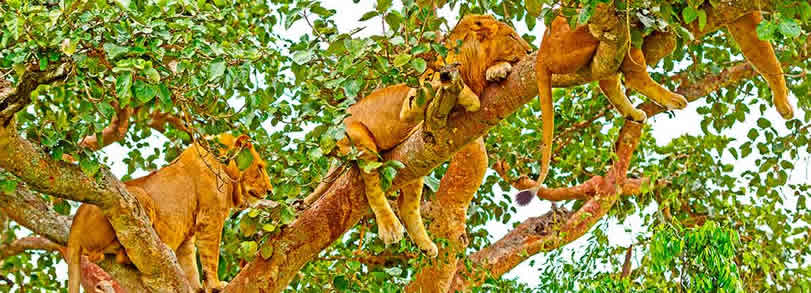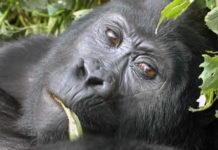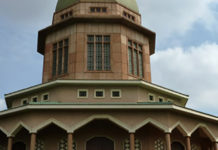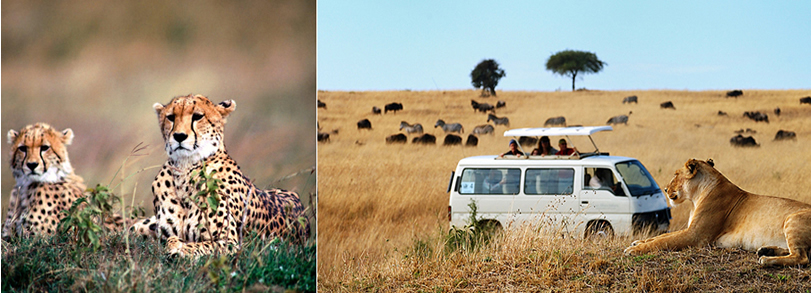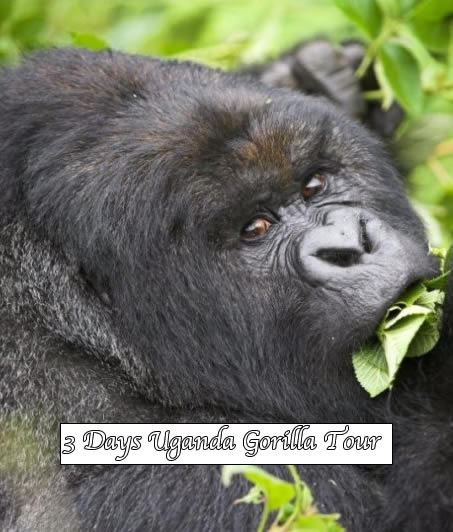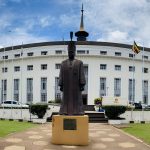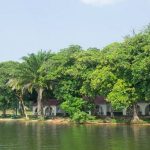Gorilla Trekking
Uganda is well known all over the word as the country with most Mountain Gorillas. In fact Uganda is the best place for Gorilla trekking in Africa and in the entire the world since it has the largest number of gorilla families inBwindi Impenetrable Forest National Park. The park is famous worldwide for gorilla trekking. There are other National parks each famous for different game species such as Kibaale National Park , Lake Mburo National Park, Kidepo Valley National Park and Queen Elizabeth National Park to mention but a few.
Kampala City
This is the capital city of Uganda and the commercial heart of Uganda. Here one experiences the true life of Uganda as people live their daily lives. Ranging from using the numerous boda bodas to beat the traffic jam to visiting exciting places and markets within the city. Below are some of the attractions that are located within the heart of Kampala.
The Bahia temple
Baha’i House of Worship Quiet and serenity reflects the spiritual truths of the Baha’i Faith: The oneness of God, the oneness of humanity and the oneness of religion. Like all Baha’i Houses of Worship, the temple in Uganda is circular in shape, has nine sides and is surrounded by exquisite gardens The building and the gardens form a single, sacred space where all people are invited to pray to God and meditate in an atmosphere of beauty and light. The Baha’i Faith recognizes the value of beauty. The word of God reveled in every age is both beautiful and practical-creating a vision of the renewal of civilization. Louis Bourgeois, architect of the temple, conceived of ornamental tracery as embodying and celebrating light-the light of a new revelation from God reveled through Baha’u’llah. Neither of the East nor of the West, the temple design transcends any specific culture, forming a unique structure where the worlds inhabitants can come and be united in prayer.
The Kasubi Tombs
The Kasubi Tombs were burned down in 2010 and the process of rebuilding them is in progress. The actual graves were not burnt down but a lot of regalia was burnt . Below is an image of the tombs before they were burned down. The main building shown on the right was rebuilt in 1882 by Kabaka Mutesa I.(It was burned down in 2010). The first palace originally built by Mutesa I’s father, Kabaka Suuna II in 1820 does not exist anymore. The Buganda Kingdom is in the process of rebuilding the Tombs.
The Uganda National Mosque
New York has the Statue of Liberty, Paris has the Eifel Tower, London has the London Eye, India has the Taj Mahal and Kampala has the Gaddafi National Mosque. Situated on the top of Old Kampala Hill, Gaddafi Mosque is built entirely of reinforced concrete and spans twelve acres.
Constructing of the mosque started in 1972 after the formation of the Uganda Muslim Supreme Council by the Government of Uganda. It was then called the Old Kampala National Mosque. Construction came to a standstill in 1976 and it wasn’t until 2001 when the Mufti of Uganda Sheikh Shaban Ramadhan Mubaje, approached the then President of the state of Libya the late Colonel Muammar Gaddafi, asking him for assistance to complete the construction of the Mosque which Gaddafi did. (A mufti is the head of the Muslim community. According to the Islamic dictionary, he is described as a person who presents laws of the scholars to people who ask for them. The word Mufti is derived from the word “fatwa” or opinion and it means ‘one who gives fatwas/opinions’.)
The Mosque can accommodate 35,000 worshippers and the number doubles during the holy month of Ramadhan and on special Islamic days. On holiday like Eid it accommodates about 200,000 people.
The Uganda Martyrs Shrine
This Uganda Martyrs Minor Basilica/Shrine is a Catholic church dedicated to the Martyrs of Uganda who shed their blood because of the Christian faith. The Shrine is well known for its beautiful and unique interior and exterior, but it is specially notable for its shape and architectural plan: the 22 copper pillars-over 100 feet long that support the shrine built in form of an African hut and its wooden doors that depict the history of the Martyrs. The Shrine has a capacity 1000 seats arranged in a circular form. The construction of the Uganda Martyrs’ Shrine began in 1967. It was completed and formally opened by the special Papal envoy, His Eminence Sergio Cardinal Pignedoli on 3rd June 1975.
The Uganda Museum
This museum portrays pre- colonial African History and of the historical items displayed includes the Nakayima tree, Ntusi, Bigo bya Mugyenyi, as well as collection of traditional musical instruments, which one is free to play plus other aspects of Ugandan history which are a good reminder of the country’s colourful past.
The Uganda Society’s library is also housed in one rooms of the Uganda National Museum and the collection is comprised of approximately 3,000 volumes, maps, periodicals and photographs, all portraying African history, culture, sociology, travel and science. In addition to the already existing library, it also houses the books of East African wild life Society. Note that the books are currently available for reference only.
White Water Rafting
Uganda is the source of the longest river in the world – river Nile. This river has been a mystery from the time it was discovered by the first explorers – Grant and Speke way back in the 18th century. Adrift Uganda has been carrying out safe water rafting adventure trips for the last 28 years. It is worth the experience.
Lake Victoria
With the all the hustle and dust in the city, lake Victoria, which is the largest fresh water body in Africa offers Ugandans and all visitors to Uganda a place to unwind and relax. The beaches are developed with good service and have enough sand for games, chilling and large enough to offer quiet time for meditation and soul searching.
Enjoy. Let us know what you loved most in Uganda.

